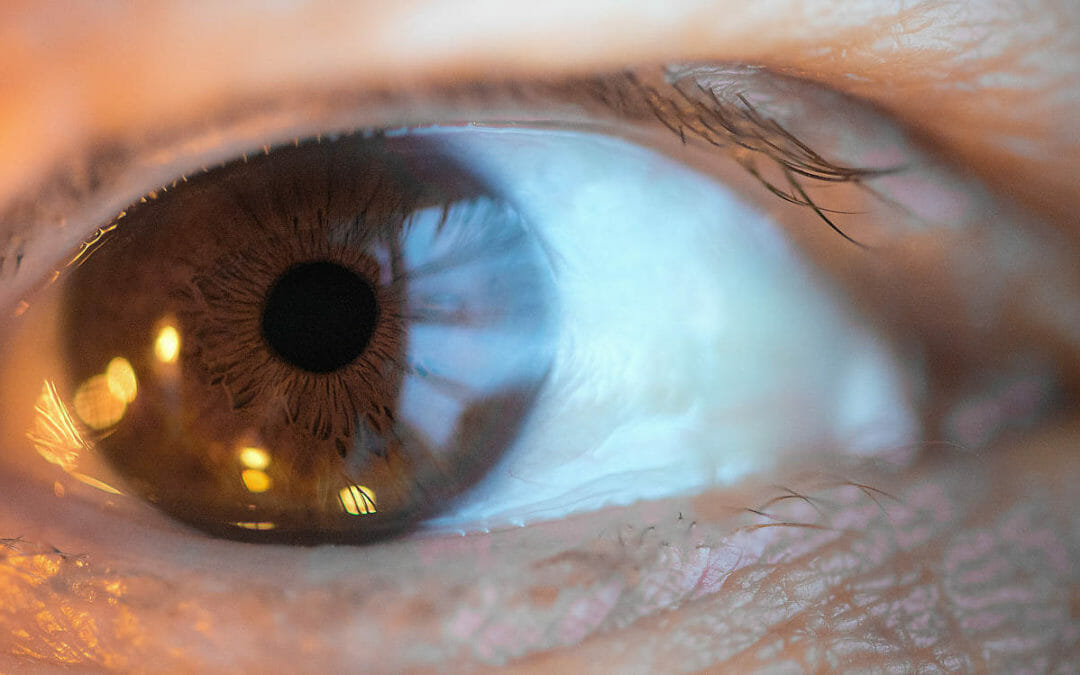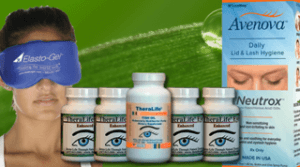Eye plugs for dry eye relief – shore up your tears.
Oral Treatment For Dry Eyes Naturally
Theralife Eye capsules are designed to treat dry eyes from inside out. More sustainable. All Natural.
Customer Stories
Severe Chronic Dry Eye –, punctal plugs, prescription eye drops and Finally TheraLife Eye- Success Story from a healthcare professional
I went to my doctor approximately 1 1/2 years ago complaining of severe discomfort in my right eye. The only way I could describe the pain was as if someone splashed hydrochloric acid in my eye. Any type of wind provided by the air outside or the AC/heat made it worse. I could not stand to be in a room that had an overhead ceiling fan. I went to my eye doctor and he said I was suffering from dry eye syndrome. He gave me some lubricant drops, steroid drops antibiotic drops and instilled temporary punctal occlusion plugs into both eyes. This offered me absolutely no relief. He then prescribed Restasis which only burned my eyes and provided me no relief. He then recommended that I only use preservative free eye drops. I tried every brand available and all of them offered me about 1 second of relief. I would apply warm compresses and that did not help. By evening I could barely see due to blurring of vision. I returned back to him after four months and his reply to me was simply, “Don’t wear eye make-up, instill the preservative eye drops as I prescribed and just learn to live with it.” Obviously, I was not happy with his answer and as a nurse decided to do additional research on my own. What I read was horrifying. What I read was that if left untreated, dry eye syndrome can lead to desiccation of the corneal epithelium, ulcerations and perforations of the cornea, increased risk of infectious disease, and, potentially serious visual impairment and blindness. One night out of pure desperation I decided to continue on with my research. I could barely read because as the day progressed the blurring of my vision got worse. I plugged in “What is the best treatment for dry eye syndrome.” TheraLife products immediately popped up and I put in an immediate order. I have been on the product now for at almost a year. In addition, my diet contained absolutely no Omega 3 or fatty acids, which my eye doctor never even questioned. I went to my eye doctor and requested a prescription Omega 3. In addition, as recommended in the TheraLife brochure I started taking evening primrose oil and flaxseed oil. Within a few days the improvement was absolutely amazing. My pain went from a 10 on a scale of 1-10 to about a 2. On occasion I will still have discomfort, but nothing will compare to what I went through and I think this doctor that I went to who is well known in his field should be ashamed of himself for not offering me other alternatives. Thank you again TheraLife for making a difference in my life. As a nurse, I have recommended your product to many people and will continue to do so.
Sincerely, DH, RN, BSN – North Brunswick, NJ
Call and talk to a doctor toll free 1-877-917-1989 US/Canada
Email to: [email protected]
Introduction
If you have dry eyes, you may have heard about eye plugs for dry eyes. These medical devices are placed in the tear ducts to help dry your eyes. They can cause excessive tearing and discomfort, which can lead to further damage. You should always follow the instructions of your optometrist before you use them to ensure that they don’t cause any damage to your eyes. If you have problems applying these plugs to your eyes, you should consult a specialist in this field.

What are Eye Plugs?
Optometrists can insert eye plugs into your eyes. These biocompatible, tiny devices block the drainage in the tear-ducts. This will increase the tear film and surface moisture in the eye. These devices, which are smaller than a grain of rice, can be inserted into puncta. The plugs may also be known as punctum and infraclavicular or occluders.
Types of Eye Plugs
There are two types. Acrylic and silicone eye plugs are permanent and will stay in place for years. They can be removed if the body reacts to them. The intracanalicular plug is another type of eye plug. It is inserted further into the tear tube and can stay there for years. In rare cases, the plug can fall out. In such cases, it is important to consult a doctor.
In some cases, eye plugs may not be effective. Your eye doctor could recommend a new treatment. Alternatively, you can also try punctal occlusion. The plugs are not a permanent solution for dry eyes. It is important that punctal occlusion does not provide permanent relief. There are many other options for dry eyes. Eye plugs can cause irritation, redness, and other side effects in some cases.
Special materials are best for dry eye plugs. Collagen plugs can be easily removed after a few months. Punctal occlusion can cause severe dry eyes. Professional help is the best option. An ophthalmologist will be able to determine which type of plugs are right for you. During this procedure, the doctor will carefully examine your eyes to determine which size and type of tear ducts are best for you.
What to Look for in Eye Plugs
The best eye plugs are made to stay in the eyes. After the plugs are in place for several hours, your eye doctor will remove them from your eye. Your doctor will give you the best advice. The punctal occlusion will help keep your eyes moist for a while. It may not be a permanent solution. For more information, see your ophthalmologist.
There are many types of eye plugs available for dry eyes. You can get them through your optometrist. The one you choose must be appropriate for your condition. The plugs’ life expectancy will depend on the type you choose. For temporary plugs, consult your doctor. If you have itchy or dry eyes, your optometrist will be able to give you a prescription.
There are many different types of eye plugs for dry eyes. A permanent or temporary plug can be used. A permanent plug, made of silicone or acrylic, is placed in the tear tube. The lachrymal or eye plug is the most popular. This plug is inserted in the eye and is then inserted within the tear ducts. The ophthalmologist will measure the size of the opening of your tear duct to determine the best size of the punctal hole.
Some eye plugs are permanent, while others have side effects. They can cause irritation and scratchiness, which can make it difficult to sleep at night. If you notice any of the symptoms, consult your eye physician. Some eye plugs can even cause your eyes too much to tear. So, it is best to consult an optometrist before you use eye plugs for dry eyes.
Frequently Asked Questions
Do punctal plugs work for dry eye?
Punctal plugs do work for dry eyes by shoring up the tear that you have. However, 50% of the punctal plugs fall out within one year.
Can punctal plugs make dry eyes worse?
Punctal plugs can make dry eyes worse if the duct becomes infected, or the plugs cause allergies.
Do you still need eye drops with punctal plugs?
Conclusion
Punctal plug can be used as a primary treatment modality in moderate to severe dry eye as it improves greater symptomatic relief and also improves the condition of damaged ocular surface.
However, if you don’t make enough tears, punctal plug installations will not feel like it made any difference. In that case, get TheraLife for oral dry eye relief that works. All natural, clinically proven to work.
References
1 Schiffman RM et al. Ophthalmology. 2003;110(7):1412-1419.
2 Asbell PA, Spiegel S. Eye Contact Lens. 2010;36(1):33-38.
3 Nichols KK et al. Invest Ophthalmol Vis Sci. 2011;52(4):1922-1929.





